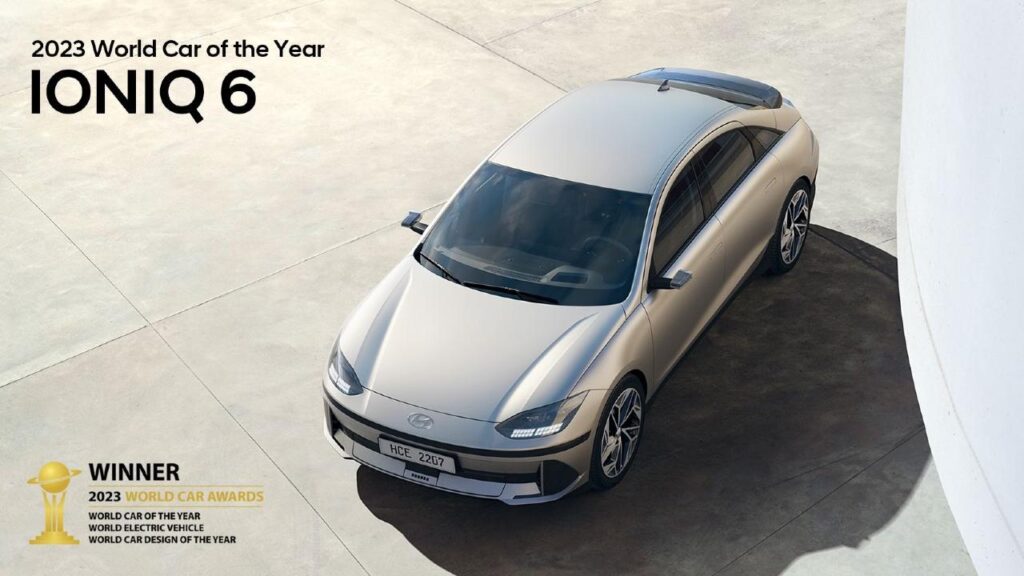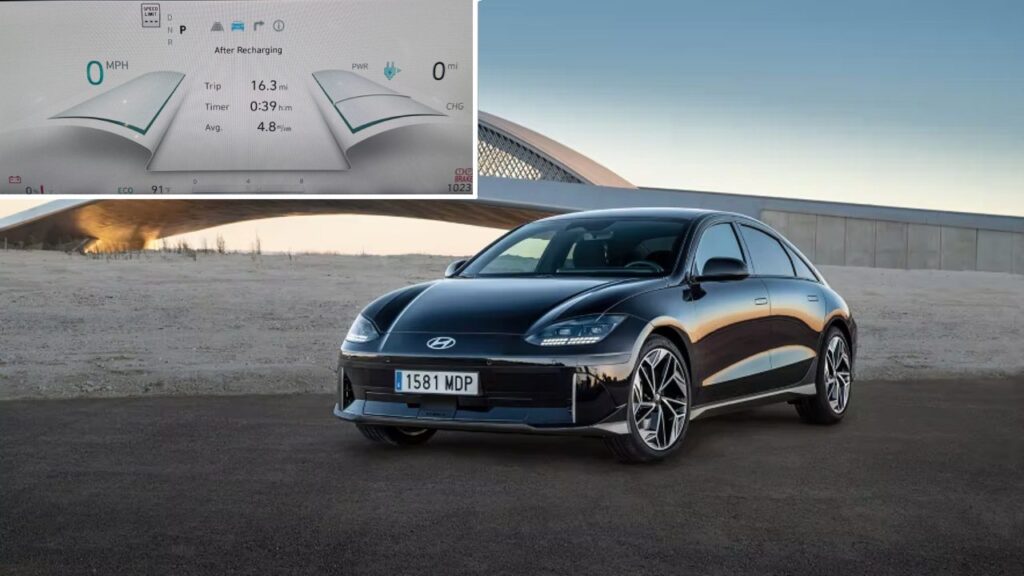I won’t recommend anyone pushing their EVs to the limits like this.
A prominent YouTuber shared his experience of how far his Hyundai Ioniq 6 was able to go at 0% SoC (State of Charge). Now, running out of juice is a phenomenon every EV owner must’ve dreaded. Hopefully, you have not experienced it. One of the biggest issues preventing mass adoption of EVs is range anxiety. It is another way of expressing the fear of being stranded on the road once the battery of your EV runs out of charge. You would be happy to know that there is always a buffer beyond 0% SoC.
You might also like: Hyundai Ioniq 6 N To Be A Meaner Avatar Of The Ioniq 5 N
Driving Hyundai Ioniq 6 Past 0% SoC
We are able to watch this intriguing video courtesy of The Ioniq Guy on YouTube. The YouTuber connects his EV with an OBD2 scanner. It allows him to monitor all the critical parameters in real time. Interestingly, he sees that the BMS (Battery Management System) displayed 5.5% SoC via the OBD scanner. At this time, the vehicle’s instrument cluster shows 0.5%. Hence, the buffer of the Hyundai Ioniq 6 RE is approximately 5%.
At regular intervals, the driver keeps updating the status of the information. After the digital gauge of the EV reads 0, the OBD2 scanner keeps him updated about the exact battery status. For the first few miles, the EV keeps running at decent power output and full AC performance. The YouTuber even mentions that he is in a slightly hilly area where the roads have inclines and descents. Still, the Ioniq 6 is working in an uncompromised manner.
At 2.5% SoC, the AC finally stopped working and the maximum power output was reduced to 76 kW to prioritize range. That is understandable. When the battery reaches goes below 2%, the maximum power output was limited to 66 kW. Finally, at around 1% battery status, the maximum power was cut down to just 50 kW. The owner kept driving it until it died completely. Eventually, the EV stopped and the trip meter confirmed that it was able to cover an impressive 16.3 miles (26.23 km) after the EV showed 0% SoC. During this time, the EV averaged a decent 4.8 mi/kWh (7.72 km/kWh).

You might also like: Hyundai Ioniq 5 N Wins Exhibition Class At Pikes Peak Climb
Learn Electric Cars Says
The Hyundai Ioniq 6 RE has an EPA-estimated range of 361 miles (581 km) on a single charge. This makes it one of the best EVs in terms of maximum range. To get almost 16 miles as a buffer could potentially be the difference between reaching the destination safely and getting stranded on the roadside. While I wouldn’t encourage anyone to try this stunt, it certainly gives you an idea of what to expect should you find yourself in such a situation for any reason at all.
I also understand that 16 miles is not a lot. Hence, you should, ideally, always plan your trip according to the tripmeter of the vehicle. In fact, you should keep a buffer for emergency situation yourself while planning a long trip. You would be surprised to know that even though it seems like a huge issue, a recent study shows that the roadside calls for EVs only contained 2% cases of dead batteries in a survey of 163,330 EVs. That should put things into perspective. In any case, until there are abundant public charging stations, you should make solid plans to ensure that you don’t land up in such critical situations.


Pingback: Hyundai Inster EV Revealed, Gets Heat Pump and V2L